VAX for All: Design to Overcome Vaccine Hesitancy and Achieve Equity
- Global Health

This Designmatters Transdiciplinary Studio, in the Summer of 2021, challenged ArtCenter students to design interventions and customizable solutions that would ensure all Angelenos have access to life-saving COVID-19 vaccines. Students explored causes of vaccine hesitancy along with sources of misinformation and inequity in distribution while engaging with experts in the field such as researchers, doctors, policy makers and community organizers. Interdisciplinary student teams co-created with these Knowledge Partners to uncover opportunities, form concepts and field test their designs. Working directly with local professionals provided students with first-hand, on-the-ground experiences of addressing a contemporary real-world problem as it unfolds.
Project Brief
This Designmatters Topic Studio challenged teams of interdisciplinary ArtCenter students to create holistic experiences, engaging campaigns, and system-based approaches to ensure all Angelenos have access to life-saving COVID-19 vaccines. Focusing on under-resourced communities, students co-created with experts in the field that included researchers, doctors, policy makers and community organizers. Students researched the realities of inequity in vaccine distribution as well as the causes of vaccine hesitancy and how misinformation is spread. Employing empathy-based design principles, teams defined areas of opportunity, co-created with Knowledge Partners and discovered how they can address contemporary issues through design for social change.
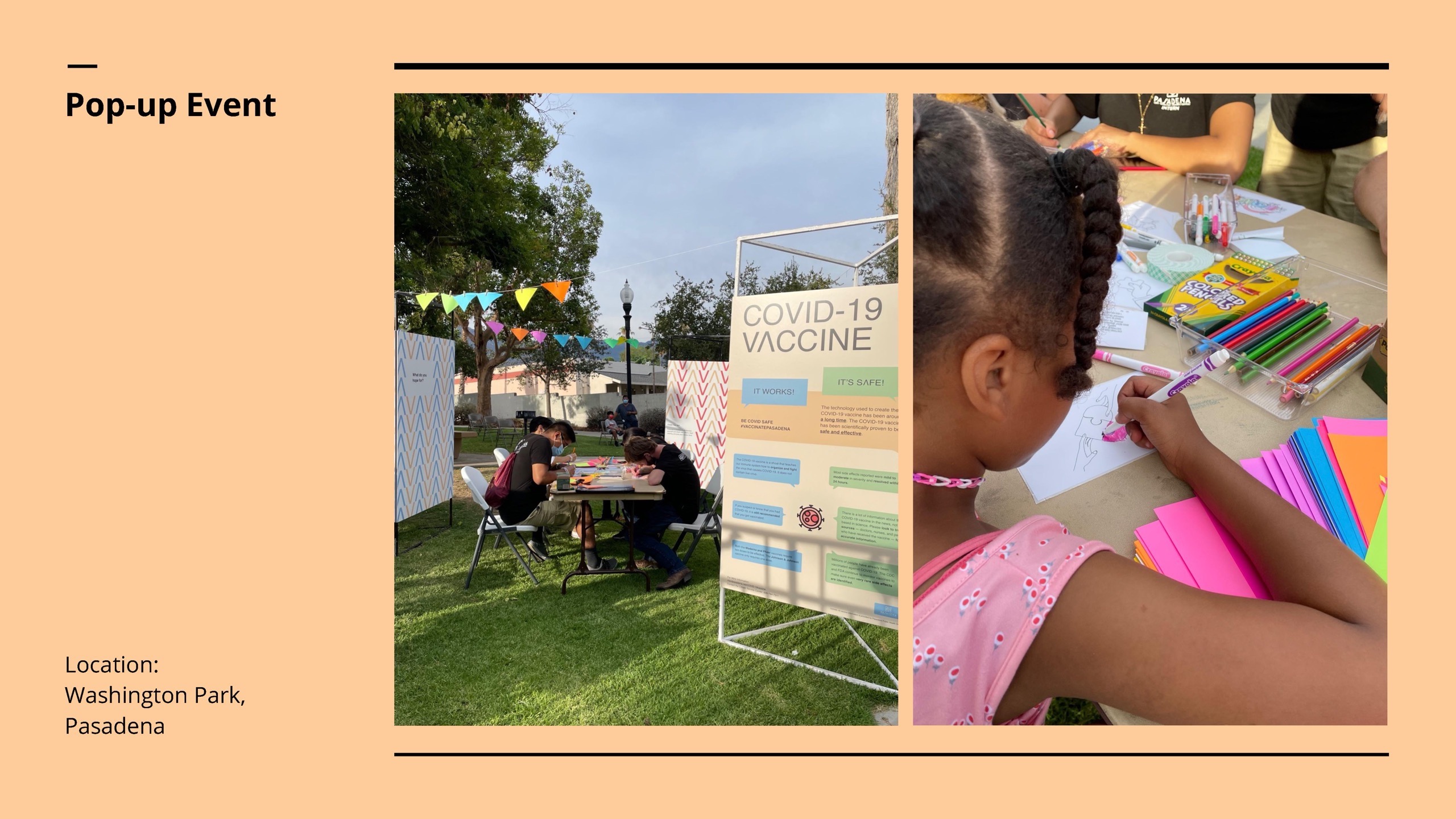
“Through projects like this, students are introduced to challenges within social innovation. They begin to understand the need to grapple with their personal positionalities and their choices as designers within larger historical and societal contexts. Students are starting to think seriously about big questions and big issues we face as a society.”
— Melissa Liu, Faculty
About COVID-19, Vaccines and Vaccine Hesitancies
COVID-19 is a respiratory disease caused by the virus SARS-CoV-2. Many infected people have mild symptoms or even no symptoms, but COVID-19 can also cause severe illness and death in others. Some people, including those who have no symptoms at first, can develop health problems that can linger for weeks, months or indefinitely.
A trio of vaccines were given emergency authorization in 2021 to prevent COVID-19 from spreading and reducing the risk of individuals ending up in hospitals, dying or becoming chronically ill. The more a population gets vaccinated, the less likely the virus (and its variants) will take hold. Even people who have had COVID-19 need vaccinations because they could become re-infected since their natural immunity may not last long enough or be strong enough.
Individuals with Vaccine Hesitancy is often defined as an individual who delays acceptance or refuses vaccines for a myriad of reasons. Published research about why individuals are refusing the COVID-19 vaccine often cites concerns of vaccine development among other reasons.
Research and Project Development
At the studio kick-off, students were introduced to local vaccine administration and distribution by a panel of subject matter experts who shared their experiences and discussed issues of vaccine hesitancy, especially in underserved Los Angeles communities.
Knowledge Partners addressing the students were: Andrea N. Polonnijo from University of California at Redlands School of Medicine; Richard Dang, Assistant Professor of Clinical Pharmacy at USC; and Liz Schwandt, community organizer and co-founder of Get Out the Shot LA.
Students heard about the history of viruses around the world that have been successfully treated with vaccines. They also learned how the Los Angeles COVID-19 vaccine rollouts in early 2021 were characterized with online appointment navigational problems.
Current local statistics were shared about the demographics of those who have already received the vaccine and those who have not. Having limited access to the internet or lack of cell phones often played a factor for vaccine scheduling. Additional barriers included inconsistent employment schedules and child care limitations. Experts also expressed how misinformation about the vaccine has affected many from rolling up their sleeves.
Students also heard about research on understanding hesitancy/refusal in other health-related issues such as HPV and shingles vaccinations. Students learned that reasons often include a lack of awareness, health providers not encouraging, a fear of the ‘side effects’ and the cost of the vaccine. The step toward acceptance usually includes slowly adressing the concerns through vaccination education and replacing these concerns with ongoing education related to the effectiveness of individual vaccination.
Students were advised to understand where community members are getting their information (social media, internet searches, neighbors and friends) and to consider that the best way to encourage vaccinations is a recommendation from a trusted person who validates the effectiveness of vaccination.
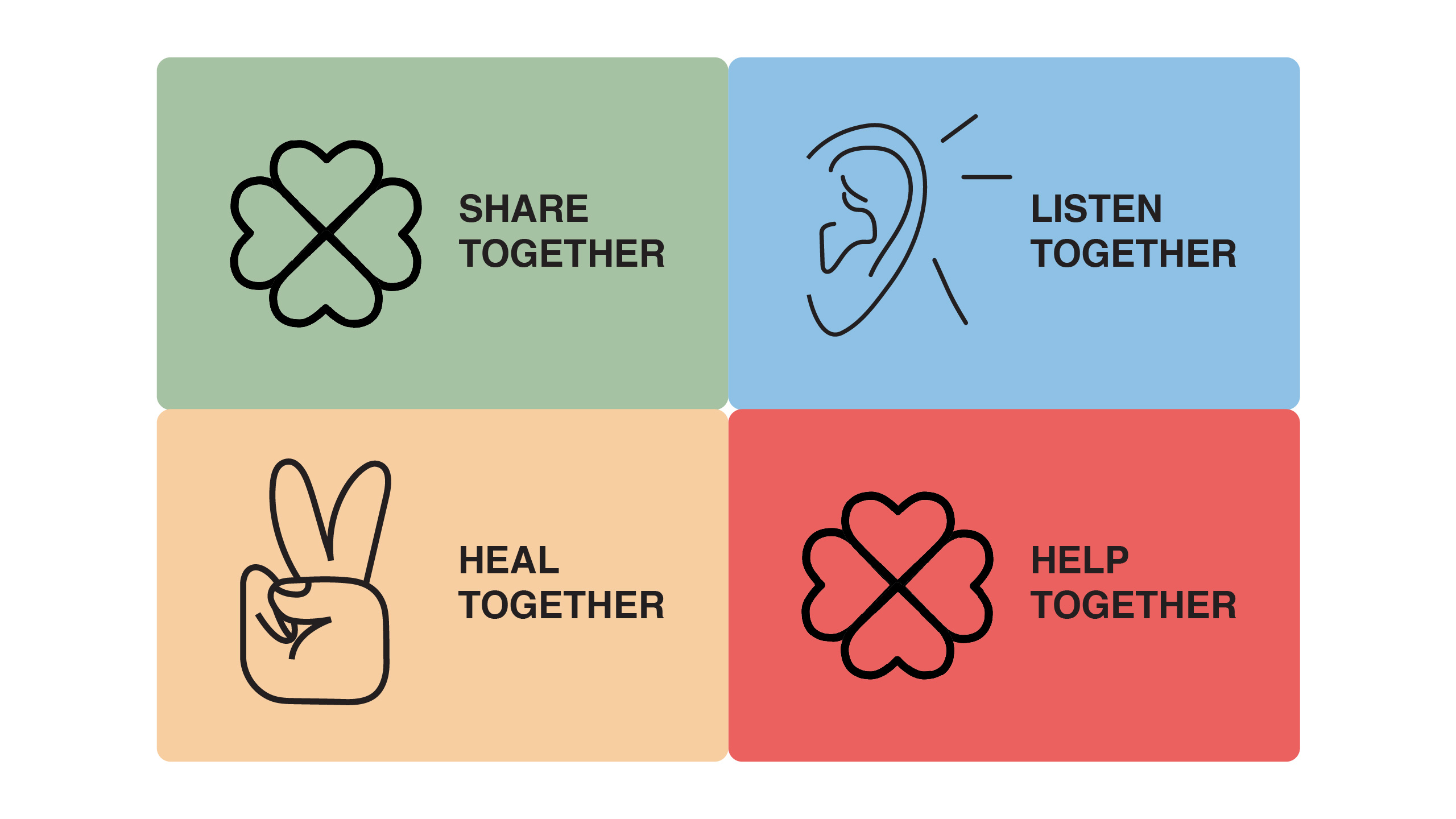
Research and Ideation
Divided into groups, students engaged in empathetic exercises as they developed strategies for their participatory research that included reviewing best practices for interviewing subjects and data analysis. They drafted research questions and considered their audience; compiling the results, they discovered insights and themes that laid the foundation for their initial concepts. Potential co-creating organizations were also examined.
Through in-class workshops teams listed challenges, created “How Might We..?” statements and ideated possible short-term and long-term solutions. Asking Knowledge Partners to “Design Their Dream,” students honed in on practical possibilities of enhancing efforts in innovative ways. Additionally, students participated in vaccine outreach events at various underfunded community locations, observing and engaging with neighbors about the importance of vaccines and pointing them to a free vaccination location.
Throughout the studio experts presented insights on a variety of related issues. Addressing the students were: Dr. Nana Afoh-Manin, Founder of CovidMD/ Shared Harvest Foundation; Kayla de la Haye, associate professor of Preventative Medicine at USC; Karen Reside of Long Beach Gray Panthers; Alex M. Johnson, program direct at the California Wellness Foundation; Dr. Celina Shirazipour, researcher at the Cancer Research Center for Health Equity at Cedars Sinai; Dr. Ying-Ying Goh, director for the City of Pasadena Public Health; and Tyler Fox, associate professor at University of Washington specializing in human-centered design and engineering.
Synthesizing their interviews, observational research and experiences in the field, student teams started to pinpoint areas of interest that would direct their design thinking toward their final project concept.
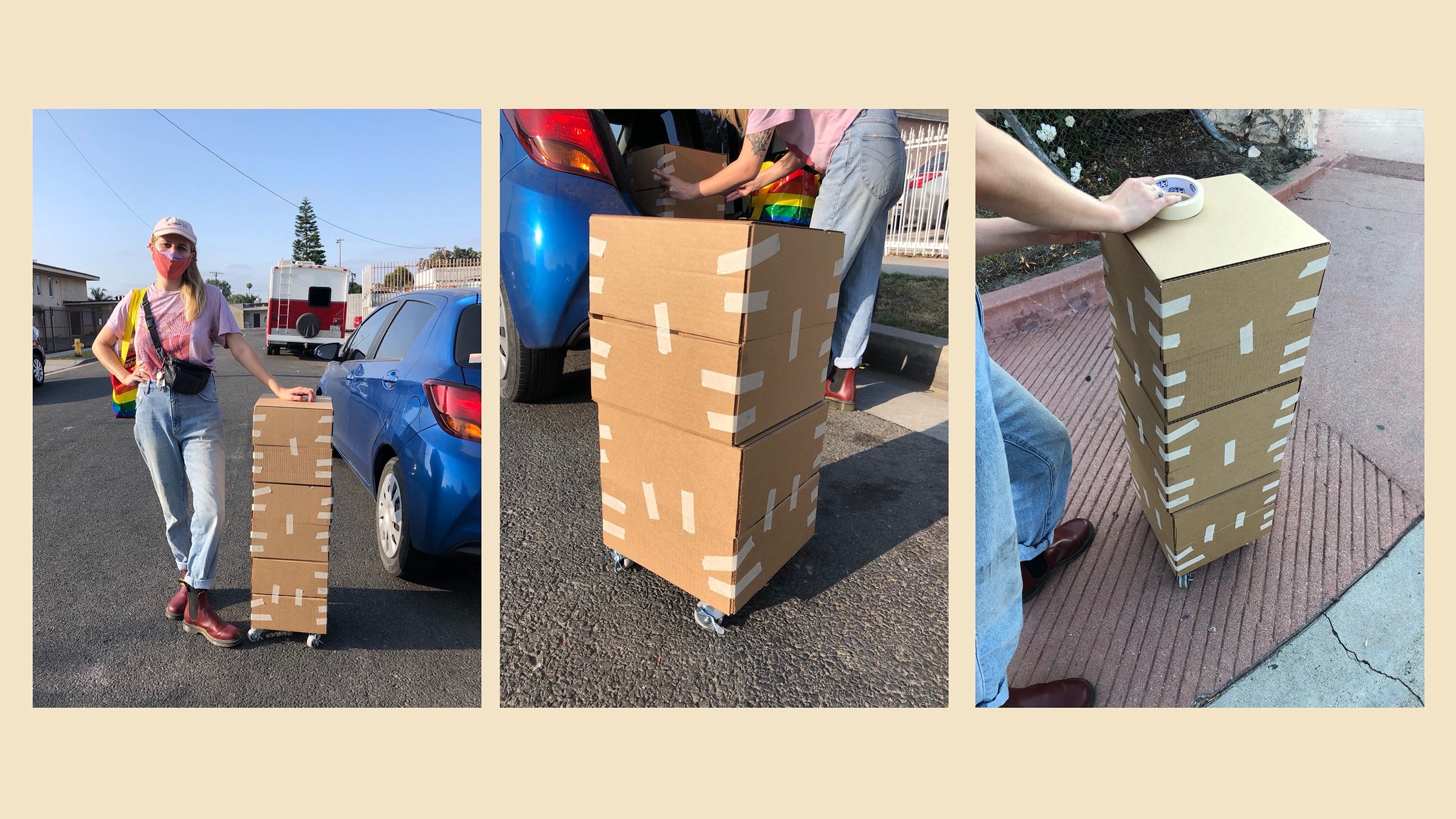
“Watching how the students began to live and breathe equity and access, rather than a model of charity and service, was so exciting and gave me so much hope. Making it easier to get trusted medical professionals right in someone’s door is part of our mission now. What the students have done could be replicated nationally and around the world. I’m really proud of [the students] and really grateful.”
— Liz Schwandt, co-founder of Get Out the Shot LA
Research Review Presentation
Student teams provided an overview of their research during a Review Presentation with various Knowledge Partners in attendance. Teams shared their research questions, insights gained from their research/interviews, opportunities they wanted to explore deeper, potential partners they could work with and finally, how they envision the next steps. Students also proposed how their concept could be streamlined with existing efforts, how technology can be utilized, and how their design can build trust among community members.
Partners offered honest feedback (e.g., How would you measure the success of your project?) and areas for possible further research. Team members asked for specific guidance and clarification, and bolstered by the feedback, they had the creative momentum moving forward into their next phase of ideation and design development.
Connecting with a Knowledge Partners directly, teams expanded their concept, closely examined the challenges and benefits their solution would bring while considering feasibility and labor of implementation.
Midterm Presentation
For the midterm, teams presented the results of their research, ideation and concept development. Students explained how they folded information from expert interviews into their design thinking and outlined how their concept could be implemented into various sites that would attract various communities. They described a potential prototype along with three personas who would either benefit from or aid in facilitation of the concept. Finally, teams shared next steps for fleshing out their ideas, proposed field testing, prototype creation, and other plans moving forward.
Post midterm, student teams reflected on their work so far. They refined their mission statements, built and field-tested prototypes, and created composites that represented the concepts, products and audience. Teams also composed video trailers, designed personas, user journeys, and outlined technical and conceptual plans.
As they moved toward the final presentation, teams incorporated storytelling principles that anchored their concepts and connected their overall design with lessons learned from co-creating with their Knowledge Partners.
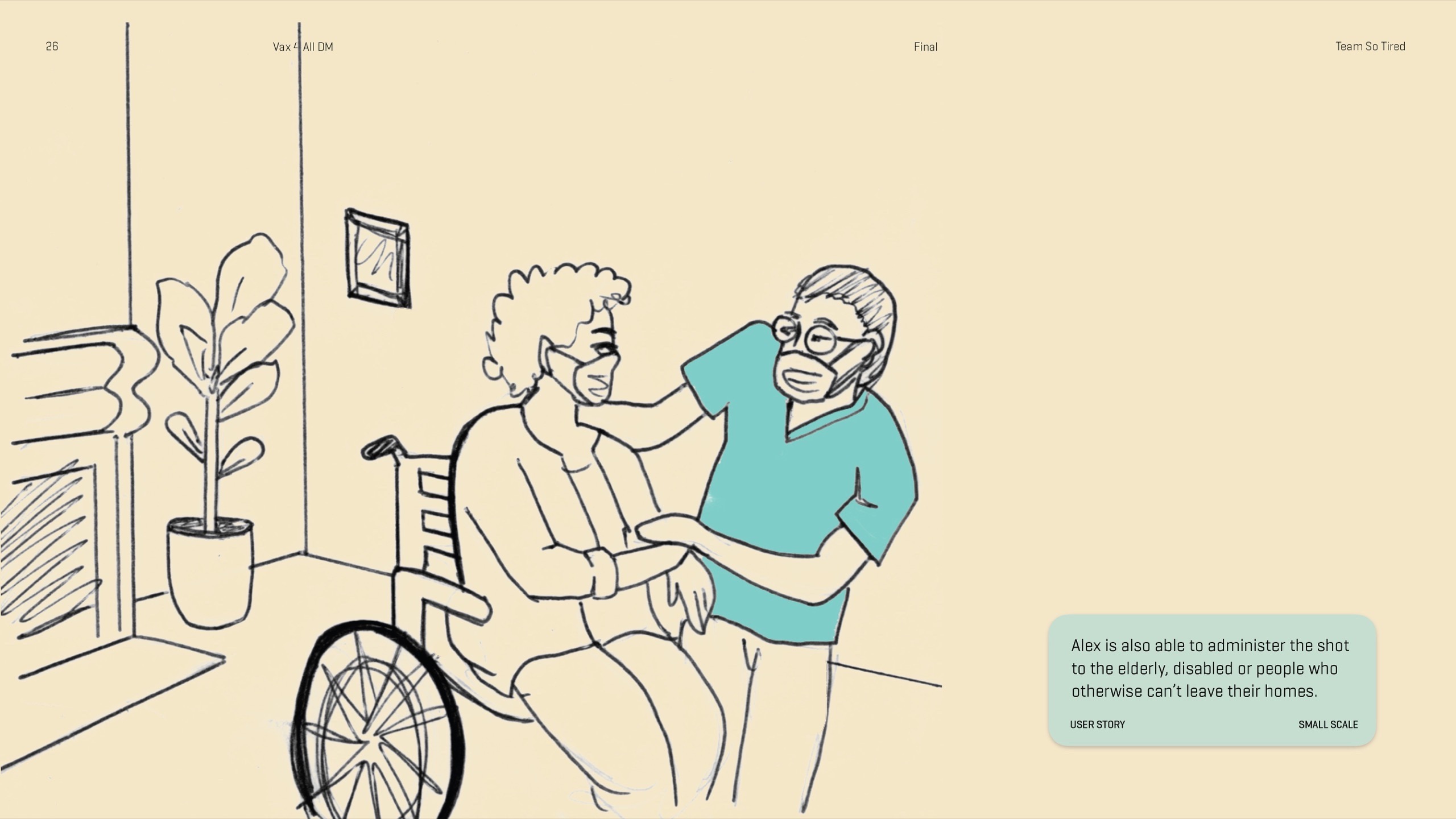
“In an era of a lot of distrust and frustration with doctors and medical systems…here is an opportunity to embrace and rebrand what medicine can look like in our community: vibrant, energetic opportunities and communal engagement. Kudos to ArtCenter students for understanding that the challenge is really about relationship building. That is the only way we are going to succeed. I’m so glad the students put their hearts into their projects.”
— Dr. Nana Afoh-Manin
Founder CovidMD / Shared Harvest Foundation
Outcomes
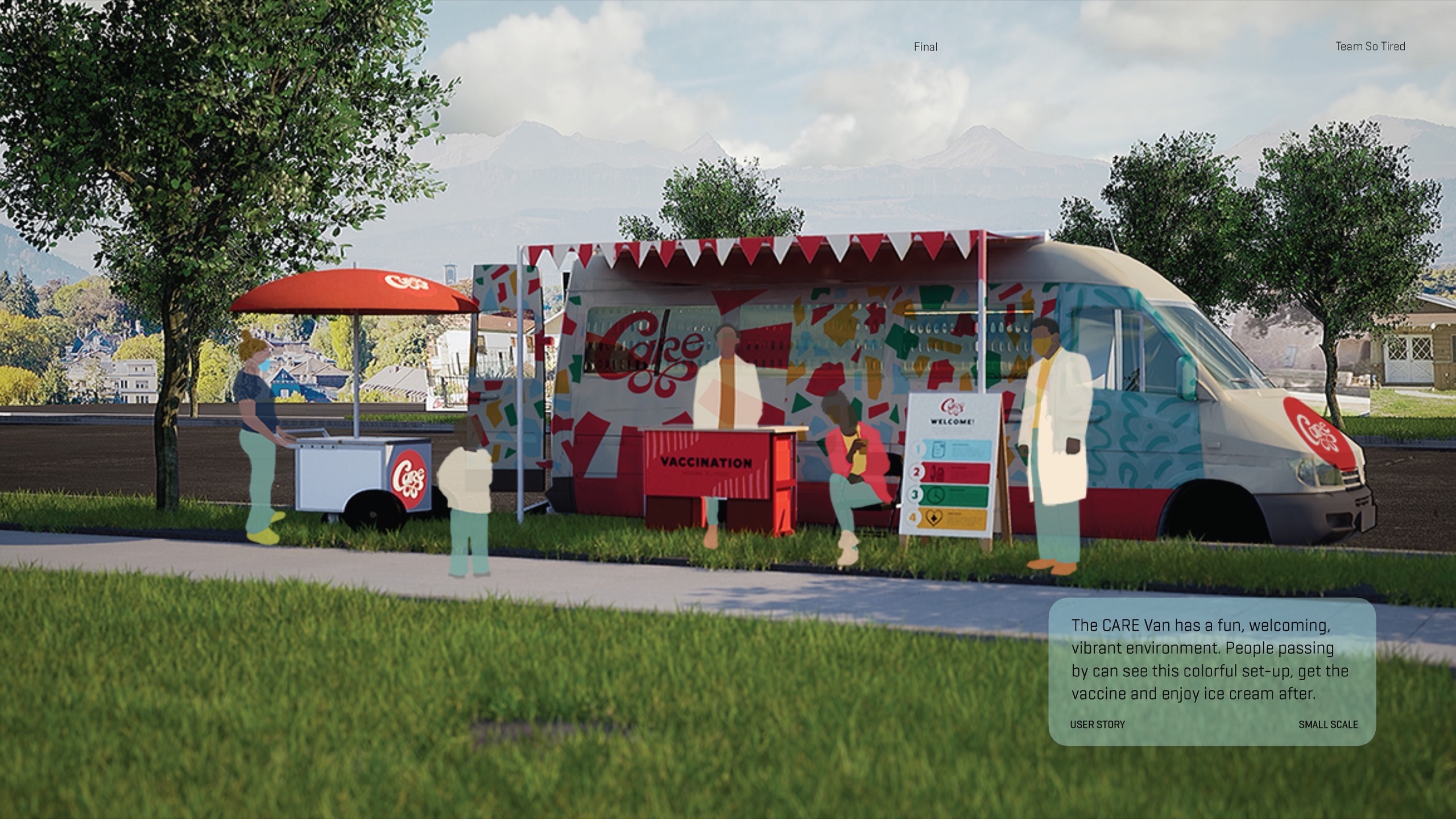 close
close
We CARE
Read moreAthena Aquino, Lauren Johnston, Soojung Yoo
This proposed modular mobile system housed in a van brings accessible vaccine resources to underserved communities in the Greater L.A. area by creating festive pop-up events, joining large scale neighborhood celebrations and having a presence at public events. This enhanced pop-up experience with colorful and eye-catching visuals will attract curious residents and help build trust for community members. At the event, friendly health workers engage with non-vaccinated individuals about the importance of getting vaccinated – which can be done free and immediately.
CARE mobile vans are customizable depending on the size of the outreach event. A color-coded system features pegboard walls for storage and stackable interior components (chairs, tables, giveaways, flag lines, etc.) that can be easily unloaded and loaded. The system is “plug and play” ready for creating onsite vaccination and observation areas along with a CARE space where visitors receive a post-vaccination CARE kit (face mask, sanitizer, band aids, etc.). The van interior serves as the doctor’s lab. A branding program can be employed to establish messaging and CARE communications to specific communities and/or with medical partners.
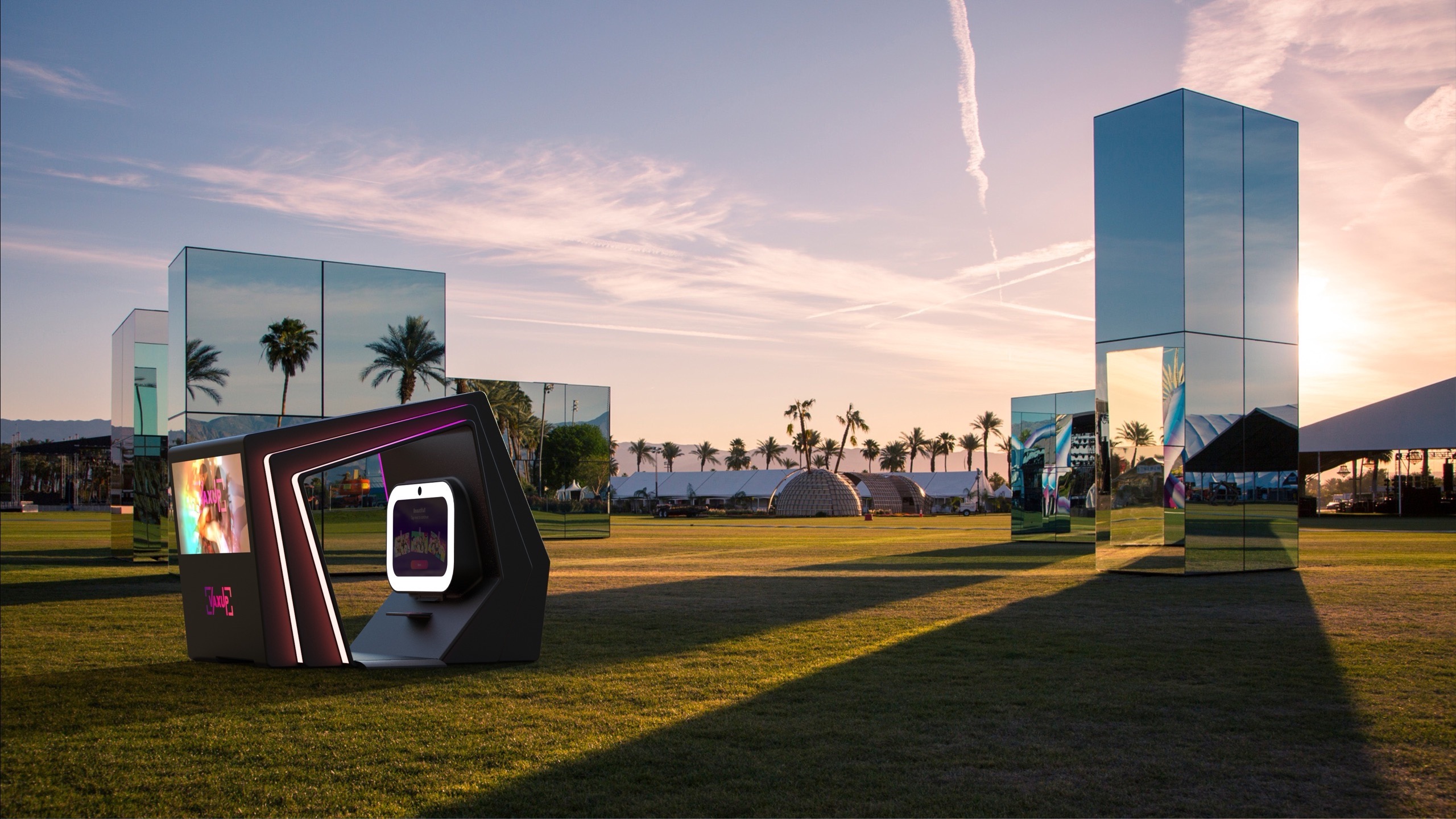 close
close
Vax Up
Read moreSteven Chen, Tobey Karpenko, Nicole Kim, Jiayi Li
Strategically placed at local events, music festivals and other gathering places for young adults, the proposed photo booth provides fun digital experience while offering vaccine education and opportunities for users to easily share their vaccine stories on sharable platforms. Having peers share their positive vaccine stories can encourage non-vaccinated youth to get the shot.
The uniquely-shaped photo booth – which is available in different colors – is transported to locations by truck and forklifted by a bobcat vehicle. Guests enter the wheelchair accessible photo booth and pose for a series of photos. Afterward, they can choose to add digital stickers that advocate for vaccines to their images. Their mini-photos are printed on a sheet of sticker-like paper – that also contains information on the value of vaccines – to peel off images for sharing. Images can also be easily shared via email or text messages. Through a QR code, visitors can also purchase products (caps, t-shirts, etc.) that display the colorful informational vaccine digital stickers.
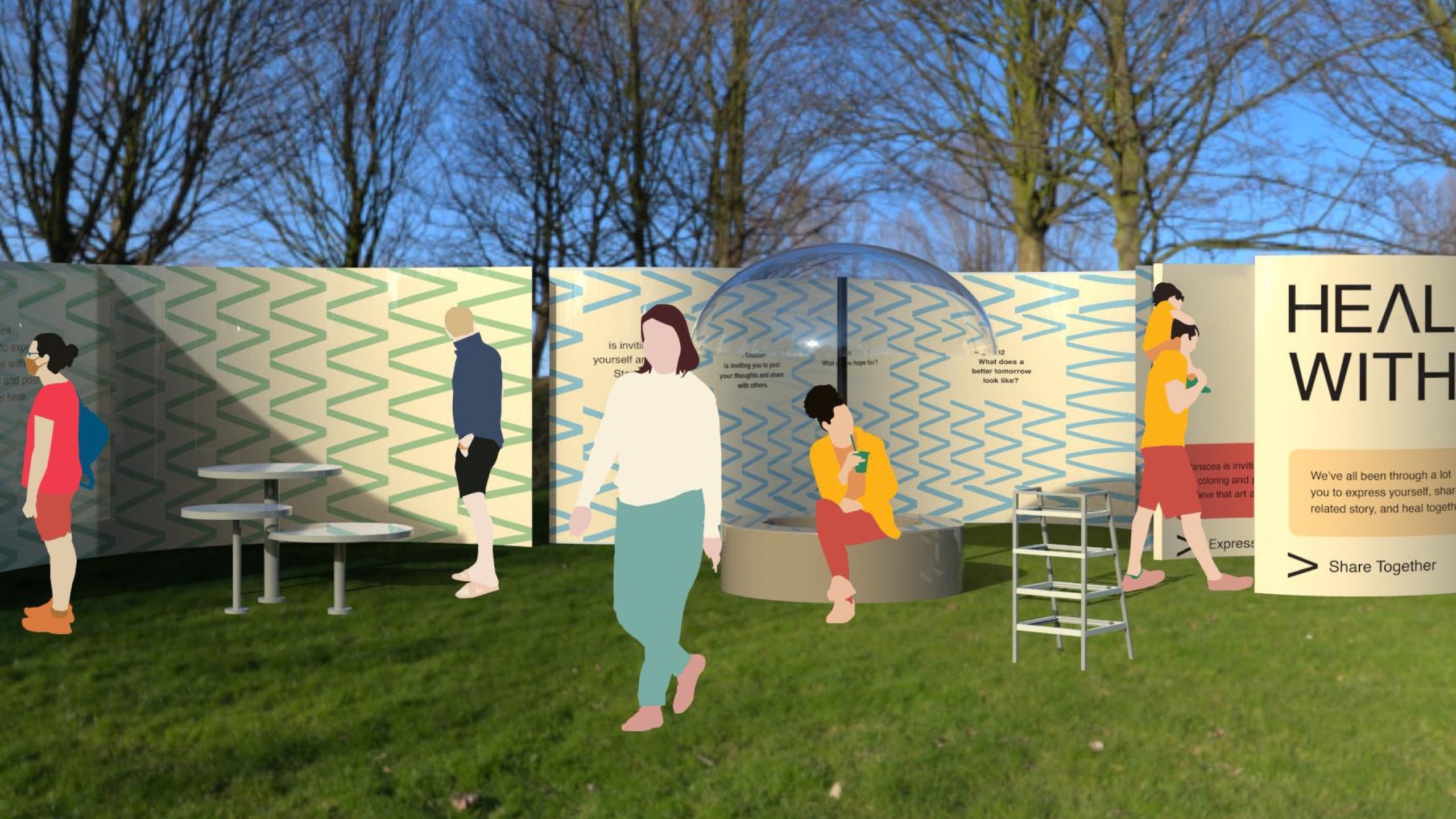 close
close
Panacea
Read moreXiaodie Huang, Matthew Hunter, Huangchen Qi
This project creates an outdoor healing space for community members to share vaccine-related stories for unifying, healing and moving forward. This pop-up event is envisioned to be installed at a local park or community hub; the healing circle involves interactive creative experiences inside large moveable walls that feature inspiring text and graphics along with areas for artwork to be displayed.
Community members follow an interior path with stops at various modules. A story-sharing component encourages individuals to vocalize and share their story; a hangout module displays provoking prompts on the walls (“What do you hope for?” “What does a better future for you look like?”) to spark conversations; an art creation station invites community members to contribute artwork to a collage/mural board; and finally a help stop offers information and resources with a live person engaging visitors about upcoming vaccination events and how to contact professionals if they have questions.